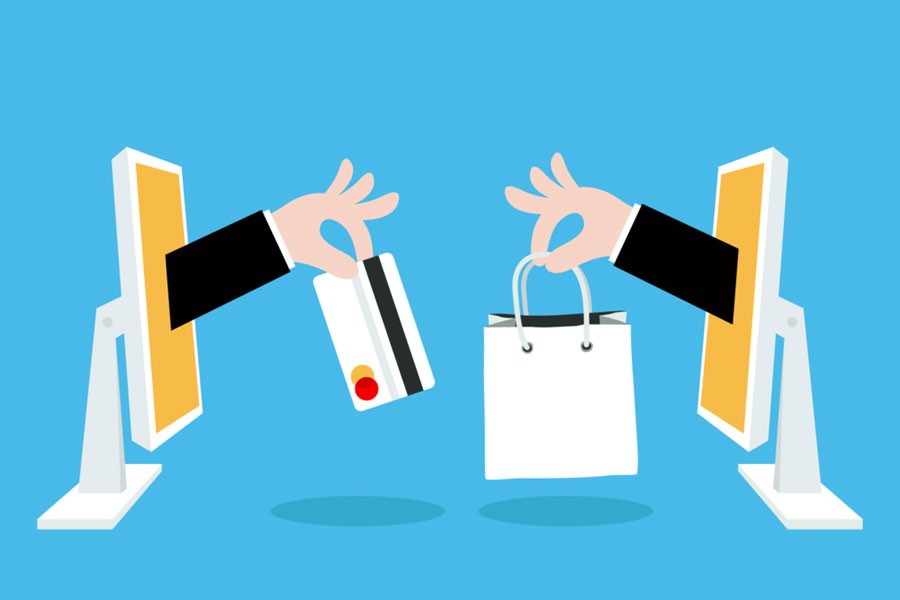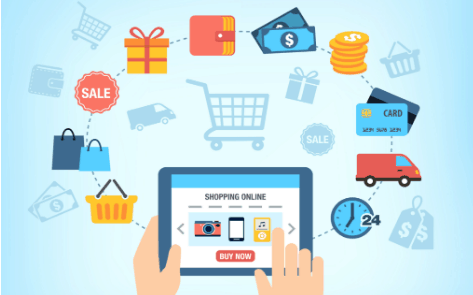
Online shopping is more popular than ever, so topics related to any online shopping and selling type have become our must-read content.
In this article, you will find out some interesting facts regarding selling on DTC sites and marketplaces and find out the differences, pros, and cons of each.
Let’s quickly introduce the terms DTC and marketplace.
DTC (Direct-To-Consumer) is used for brands that sell their products directly to customers without using any third-party outlet.
On the other side, a marketplace is an eCommerce website where multiple third parties provide products or services, so-called third-party sellers.
Current Stats
Currently, marketplaces are growing faster than DTC sites. According to many sources, the top three US marketplaces are Amazon, Walmart, and Target. Their average growth in 2021 was between 20 and 25%.
However, we can’t say DTC growth was low. With respectable growth of around 15%, selling on DTC sites should also be considered. Shopify became the most popular platform for a DTC site.
Comparing DTC and marketplaces, it’s easy to see that the main advantage of marketplaces is lower prices and faster shipping. The prices on marketplaces are around 25-30% lower on average than the same item on DTC sites. The same applies to shipping. While marketplaces offer fast (2-3 days) shipping options, shipping time will be mostly at least three days longer on DTC sites. The majority of products on marketplaces will have a free shipping option. On DTC sites, you will usually need to pay for shipping.

Why Sell on DTC Sites?
Although marketplaces are very popular and a way to increase sales, there are some benefits of selling on DTC sites. The first is lower sales costs, and you don’t have different types of fulfillment, referral, or fees to pay as a seller on marketplaces.
By selling on DTC sites, you own your customer data, which gives you an excellent possibility for community creation, different marketing campaigns, rewards, and a great customer experience that should result in long-term loyalty. On DTC sites, sellers can create a relationship with their customers differently, which is not the case on marketplaces.
You also control your distribution channel and have a much higher average order value when selling on DTC sites.
DTC site is even more important for manufacturers because, in this way, they have the opportunity to benefit from everything mentioned above.

Why Sell on Marketplaces?
Marketplace offers are massive. With Amazon offering more than 350 million products, and Walmart offering more than 40 million products, we have a huge selection that attracts customers. The way marketplaces have organized different digital departments, categories, and overall ease of use is why we see them getting more popular each year.
On marketplaces, sellers have many ways to promote their catalog strategy. And, of course, marketplaces offer fast and mostly free shipping.
In the end, all Top 3 US marketplaces are very customer-oriented. Are we still asking ourselves why customers like marketplaces?
Things to Consider for Success on DTC and Marketplaces
The first point for success on DTC sites and marketplaces is brand awareness. Sellers must own their brand and brand terms on search engine result pages.
They must also own their listing. There is no need to make your listings identical on DTC and marketplaces. Actually, differentiating listings is a recommendation.
On the other side, the brand voice should be consistent on both DTC and marketplaces. For example, if you want to offer 20% off on DTC, you should do so on marketplaces as well.
On marketplaces, having many resellers who can also contribute the content can result in poor brand performance. Try to get into a new customer database and win digital placements. Sellers on Walmart, for example, should also consider exposure to retail Bricks & Mortar.
On DTC sites, to succeed, collecting the data and creating a customer database is crucial. The focus should be on community engagement, spreading the word about the brand, and establishing the brand. Once the community has been created, sellers on DTC sites should constantly offer exclusives, bundles, rewards, etc.
When we speak about sellers who have their own website and sell on Amazon, a new feature announced by Amazon just a few days ago is something they want to explore.
Amazon’s ‘Buy with Prime’ feature is a new way for customers to enjoy the shopping benefits of Prime from online merchants, whether they sell in Amazon’s store or beyond. This feature includes fast and free shipping and free returns to merchants’ own online stores!
All eligible products on DTC sites will have the Prime logo and expected delivery dates displayed on the website and the possibility to use Amazon Pay and return handling by Amazon.
In the beginning, this feature will be available for FBA sellers who will receive an invitation from Amazon, but we are pretty sure Amazon will soon expand it.
Final Thoughts
Shopify is now 40% of the size of Amazon Marketplace, and it was only 25% two years before, according to Market Pulse. Many manufacturers use Shopify as their DTC site platform.
As mentioned in the beginning, the main cons of DTC sites are higher prices and slower or paid shipping. But it is only a matter of time, and some adaptations, before we will see DTC sites offering better shipping options.
Because DTC growth was only 5-10% lower than average marketplace growth, we believe sellers should consider and implement strategies for successful selling on DTC and marketplaces.
If you have additional questions or want us to help you on your Amazon journey, don’t hesitate to contact the BellaVix Team.
Keep up with the latest Amazon and Walmart news updates and subscribe to our BellaVix newsletter 👇👇👇
